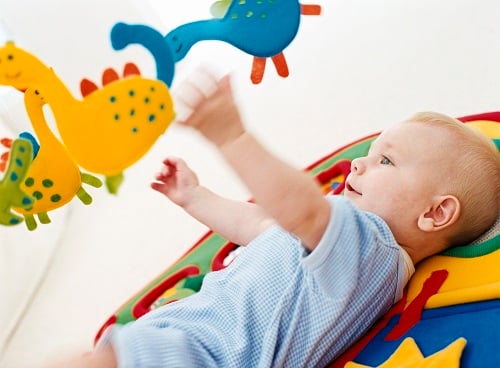Feed your baby right after birth
Your baby is born with a suckling instinct that’s strongest in the first hour of birth. If you’re both well, take advantage of this so that breastfeeding is easier.
Get help with positioning
Breastfeeding requires lots of practice so don’t hesitate to ask a nurse or lactation consultant for help when you’re in the hospital. While initial tenderness is normal, you shouldn’t be in pain and usually, adjusting your positioning makes a world of difference.
Keep your baby close to you
Skin-to-skin contact soothes your baby and helps you watch for the signs that your baby is hungry and wants a feed, so nestle your baby against you.
Frequent feeding is normal in the early days
The more often you feed, the more milk you’ll produce, so offer your breast whenever your baby seems hungry or cries. This might be every 2 hours or more often at the beginning. Don’t try to enforce a feeding schedule at this point. Instead let your baby take the lead and feed on demand. You’ll eventually develop a routine that suits you both.
Offer both breasts at every feed
If your baby only takes one, start your next breastfeeding session on the other breast.
Don't give your baby bottles or pacifiers
While you and your baby are still getting used to breastfeeding, don’t confuse them with bottles and pacifiers. You can introduce these when you’ve established breastfeeding.
Treat soreness
If you experience soreness after a period of pain-free feeding, you could have thrush on your nipples. See your doctor so both you and your baby can get treatment if you need it.
Forget the clock
Some babies feed quickly and are done in 10–15 minutes. Other babies can take up to 40 minutes. Let your baby set the pace as long as you're both comfortable. Allow your baby to nurse as long as they want on one side before switching. That way you'll know that they’re getting enough high-calorie hindmilk and that you're maintaining an adequate milk supply.
If your feeds regularly go over an hour, fail to keep your baby happy and leave him hard to settle, then something's not right. Check your positioning to ensure your baby's able to take a more satisfying feed.
Regularly change your breast pads
Damp breast pads quickly develop bacteria and can lead to infections.
Break the suction before removing your baby
Your baby will unlatch naturally when they’re done and you shouldn't have to take baby off your breast. But if you do need to interrupt the feed, gently slide your finger into the corner of your baby's mouth to break the suction seal they create before pulling your baby off.
Moisturise with breast milk
At the end of a feed, express a little milk and massage it onto your nipples to prevent them from drying out and cracking. If possible, leave your nipples to dry in the open air.
Remember, breastfeeding is something you and your baby have to learn and it can take a little while for it to feel normal and natural. What goes on in the first days and weeks changes as time goes on.
Do you know that an average baby will need 1057 nappy changes in the first 6 months? Get exclusive promotions and free diaper samples by joining the Huggies Club now! As a member, you can also gain exclusive access to the Huggies Forum and connect with experts to get more personalized pregnancy and parenting advices.
Last Published* July, 2023
*Please note that the published date may not be the same as the date that the content was created and that information above may have changed since.



